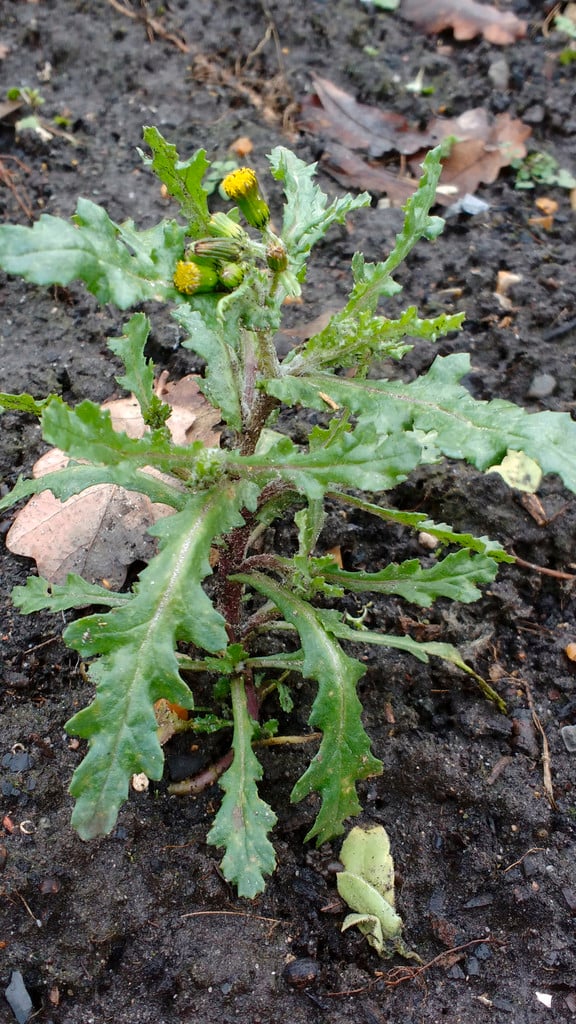Senecio vulgaris
groundsel
A fast-growing upright annual to 60cm high, with long, deeply lobed leaves growing directly from hollow stems. Produces yellow flowers, mostly hidden by green bracts and resembling a half-opened dandelion. Flowers go on to produce fluffy white seed heads, seeds are prolific and wind-dispersed
Size
Ultimate height
0.5–1 metresTime to ultimate height
1 yearUltimate spread
0.1–0.5 metresGrowing conditions
Moisture
Well–drained, Moist but well–drainedpH
Acid, NeutralColour & scent
| Stem | Flower | Foliage | Fruit | |
| Spring | Yellow | Green | ||
|---|---|---|---|---|
| Summer | Yellow | Green | ||
| Autumn | Yellow | Green | ||
| Winter | Green |
Position
- Full sun
Aspect
South–facing
Exposure
Exposed or Sheltered Hardiness
H5Botanical details
- Family
- Asteraceae
- Native to GB / Ireland
- Yes
- Foliage
- Deciduous
- Habit
- Columnar upright
- Genus
Senecio can be annuals, biennials, perennials, climbers or shrubs, some succulent, with simple or pinnately divided leaves and daisy-like flowers, occasionally without ray-florets
- Name status
Correct
How to grow
Cultivation
Most vigorous in moist, fertile soils, but will successfully adapt to a range of growing conditions, though does not grow as well in shade. Spreads rapidly over long distances, generally considered a weed.
Propagation
Propagates by seed, produced prolifically through the year. In optimum conditions, life cycle can be very short, from seed to seed in under six weeks
Suggested planting locations and garden types
- Wildlife gardens
Pruning
Remove before flowering to prevent spreading
Pests
May be susceptible to mealybugs, scale insects and glasshouse red spider mite
Diseases
May be susceptible to a rust and honey fungus
Get involved
The Royal Horticultural Society is the UK’s leading gardening charity. We aim to enrich everyone’s life through plants, and make the UK a greener and more beautiful place.

